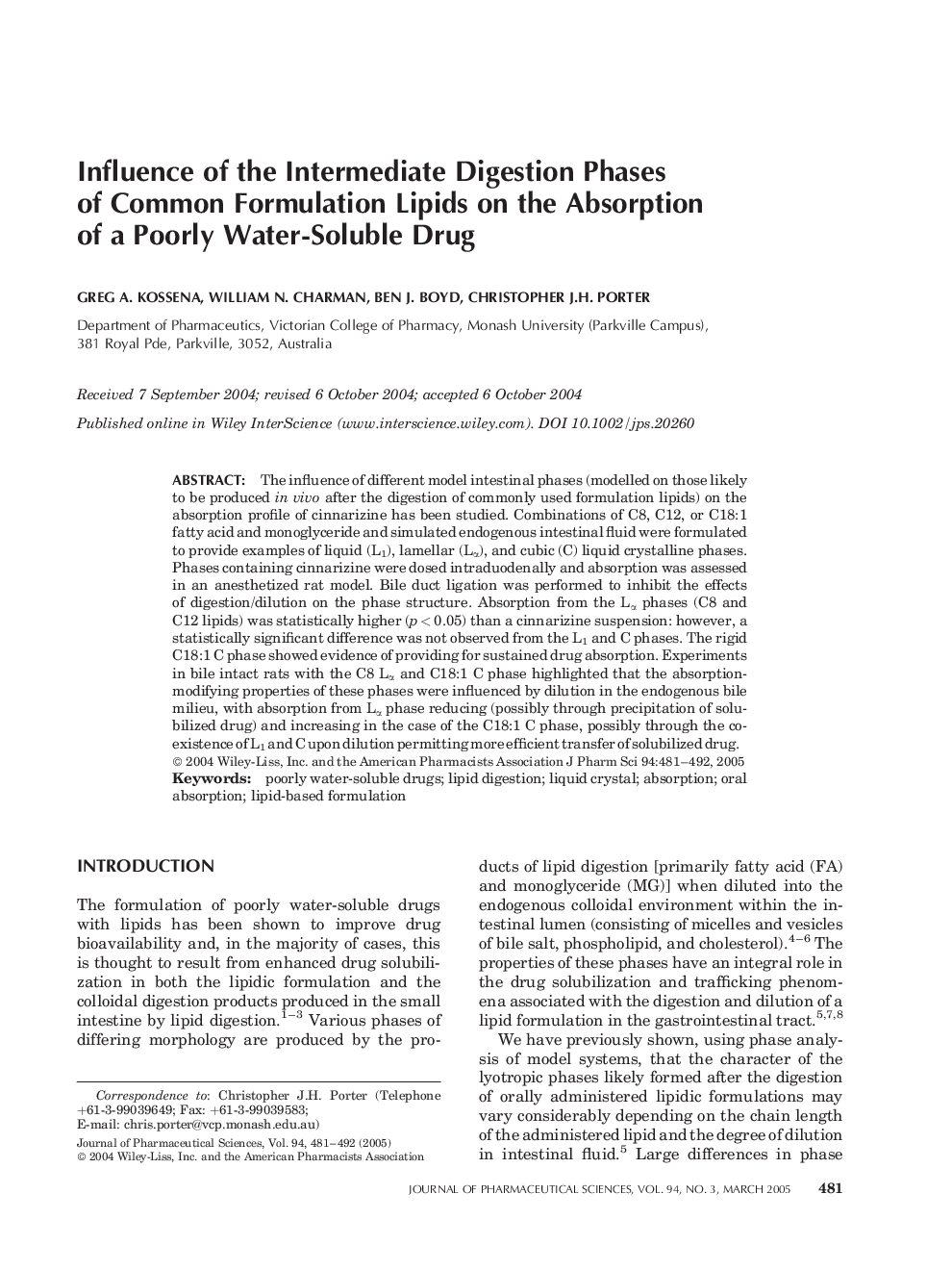| Article ID | Journal | Published Year | Pages | File Type |
|---|---|---|---|---|
| 8994323 | Journal of Pharmaceutical Sciences | 2005 | 12 Pages |
Abstract
The influence of different model intestinal phases (modelled on those likely to be produced in vivo after the digestion of commonly used formulation lipids) on the absorption profile of cinnarizine has been studied. Combinations of C8, C12, or C18:1 fatty acid and monoglyceride and simulated endogenous intestinal fluid were formulated to provide examples of liquid (L1), lamellar (Lα), and cubic (C) liquid crystalline phases. Phases containing cinnarizine were dosed intraduodenally and absorption was assessed in an anesthetized rat model. Bile duct ligation was performed to inhibit the effects of digestion/dilution on the phase structure. Absorption from the Lα phases (C8 and C12 lipids) was statistically higher (pâ<â0.05) than a cinnarizine suspension: however, a statistically significant difference was not observed from the L1 and C phases. The rigid C18:1 C phase showed evidence of providing for sustained drug absorption. Experiments in bile intact rats with the C8 Lα and C18:1 C phase highlighted that the absorptionâmodifying properties of these phases were influenced by dilution in the endogenous bile milieu, with absorption from Lα phase reducing (possibly through precipitation of solubilized drug) and increasing in the case of the C18:1 C phase, possibly through the coexistence of L1 and C upon dilution permitting more efficient transfer of solubilized drug. © 2004 WileyâLiss, Inc. and the American Pharmacists Association J Pharm Sci 94:481-492, 2005
Related Topics
Health Sciences
Pharmacology, Toxicology and Pharmaceutical Science
Drug Discovery
Authors
Greg A. Kossena, William N. Charman, Ben J. Boyd, Christopher J.H. Porter,
